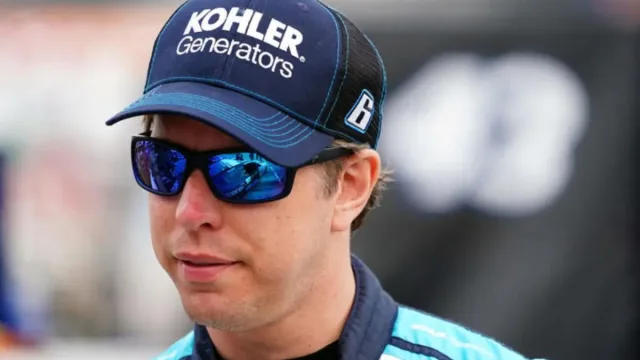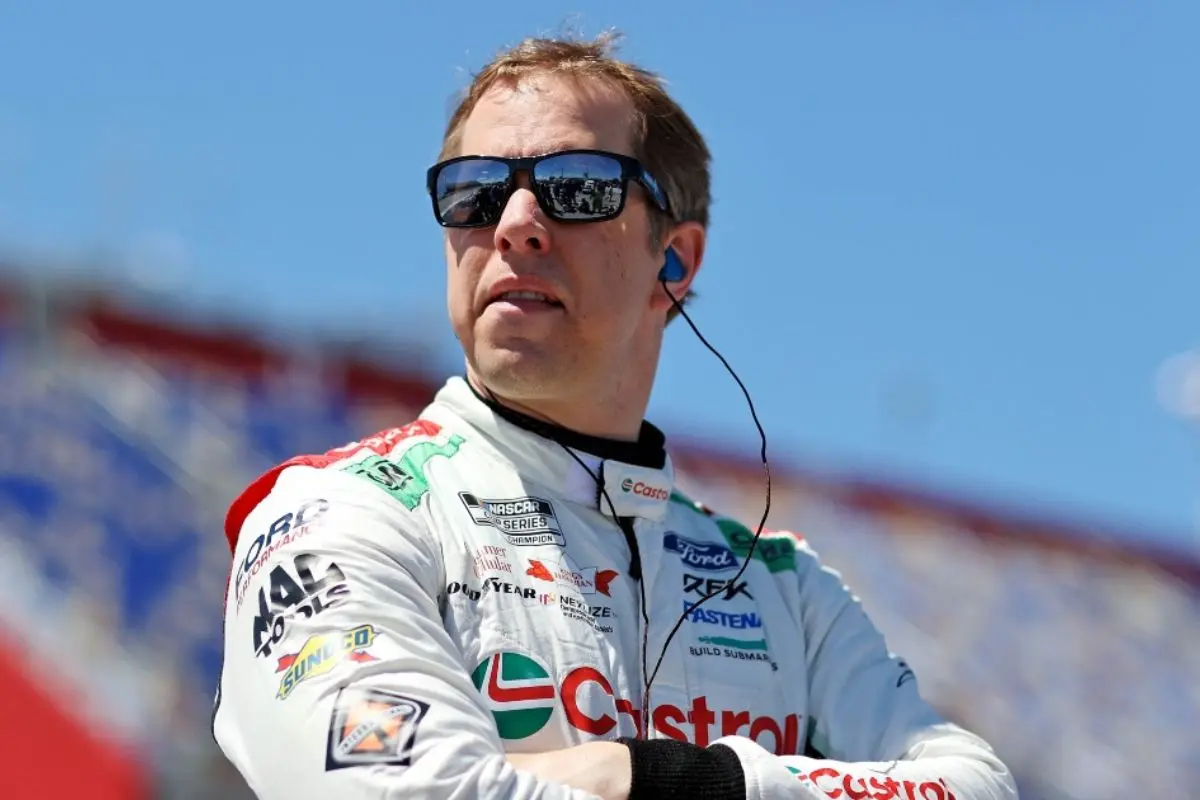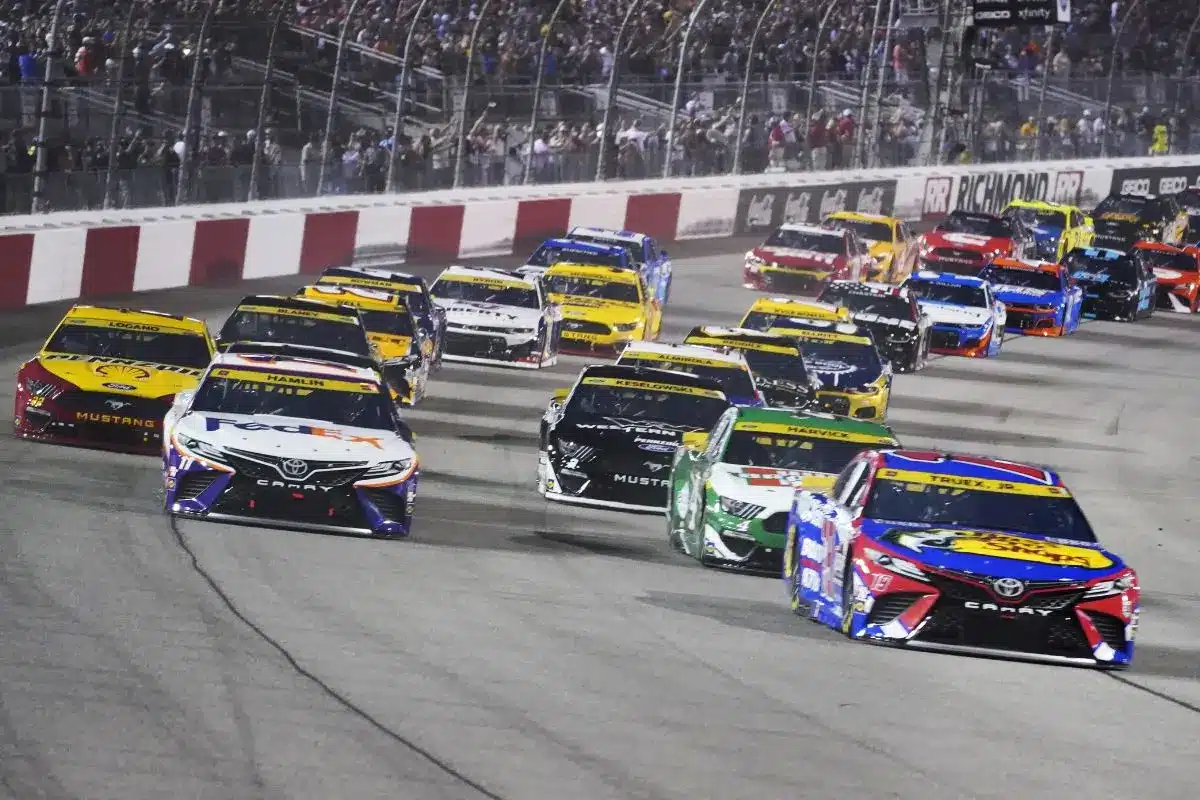Brad Keselowski Breaks Silence on Race Manipulation: Brad Keselowski has raised notable concerns regarding OEMs on race outcomes, specifically referencing manipulation during the Martinsville race. He argues that OEM directives often prioritize manufacturer interests over drivers’ autonomy, undermining competitive integrity. This situation is akin to incidents at Talladega, where explicit communications from manufacturers directly affected driver decisions.
Key Highlights
- Brad Keselowski’s comments highlight concerns over OEM influence affecting race strategies at Martinsville, raising questions about competitive integrity.
- He emphasized that manufacturer directives can overshadow driver decision-making, complicating the racing dynamic.
- Keselowski pointed out how OEM pressure limits driver autonomy, forcing conformity to team orders.
- The ongoing lawsuit involving teams underscores tensions between collaboration and competition within NASCAR.
- Keselowski’s insights reflect a growing unease about the authenticity of racing outcomes amidst manipulation allegations.
Brad Keselowski’s Concerns on OEM Influence and Race Manipulation
What are the implications of OEM influence on driver performance and race outcomes? The influences exerted by Original Equipment Manufacturers (OEMs) can notably impact the dynamics of racing, as articulated by Brad Keselowski. His reflections on the Martinsville race reveal a growing unease regarding the extent to which OEMs shape driver behavior and tactical decisions on the track.
As teams increasingly align themselves with manufacturers, these relationships can lead to an environment where drivers may feel compelled to prioritize manufacturer agendas over individual performance or team strategy.
The observed escalation of tensions between teams and manufacturers suggests that the stakes are higher than ever. Drivers, who are tasked with maneuvering the complexities of races, must now contend with the added layer of OEM influence, which can manifest in a variety of ways—from vehicle specifications to race-day tactics.
This influence complicates the traditional role of drivers as the primary decision-makers in their pursuit of victory. Keselowski’s insights indicate that during critical races, the strain from OEMs can lead to an atmosphere of manipulation, potentially skewing race outcomes.
The implications are profound: if drivers are beholden to the whims of their manufacturers, the integrity of the competition may be compromised. As the automotive landscape continues to evolve, understanding the dynamics of OEM influence will be crucial for stakeholders aiming to preserve the essence of motorsport while managing the influences of commercial interests.
The Talladega Example and OEM-Driven Tactics
While reflecting on the complexities of OEM influence in racing, Brad Keselowski highlighted a notable instance during the Talladega race that emphasizes the impact of manufacturer-driven tactics on competition. In this particular event, drivers received explicit radio communications instructing them not to push a Ford car, showing how OEMs can dictate racing strategies that may distort the natural competition on the track.
This situation demonstrates a growing trend where manufacturer directives can supersede individual driver decisions, raising concerns about the integrity of race outcomes. The practice of enforcing such instructions creates an environment in which participants must navigate not just their competitive instincts but also the strains imposed by their manufacturers.
This dynamic can lead to perceptions of manipulation, where the authenticity of racing is compromised in favor of OEM interests. Keselowski’s observations prompt critical questions about fairness in racing. When drivers are compelled to adhere to directives that prioritize manufacturer agendas over competitive integrity, the essence of motorsport is at risk.
This manipulation can skew race results, as drivers align their tactics with those dictated by OEMs rather than their own instincts and strategies. Ultimately, the Talladega example serves as a clear reminder of the delicate balance between manufacturer influence and the fundamental principles of competition within NASCAR.
Drivers’ Limited Leverage in NASCAR’s Current Setup
In the current NASCAR landscape, drivers find themselves with limited advantage, often constrained by the powerful influence of teams and OEMs. This dynamic raises critical questions about the autonomy of drivers in a sport traditionally characterized by individual skill and competitive spirit.
Brad Keselowski has voiced skepticism regarding the directives issued by OEMs, describing their enforcement as akin to children testing boundaries, lacking substantive consequences. This analogy highlights a troubling reality: drivers are frequently compelled to adhere to team orders, greatly curtailing their decision-making authority on the track.
“When I’m in the car, Bob, I can only see like this much, and I hear from my spotter. I’m like, something didn’t feel right, But I didn’t know everything that was going on in real-time.” – Brad Keselowski
The hierarchical structure of NASCAR, wherein teams and OEMs wield considerable power, results in a scenario where drivers face tangible repercussions for deviating from established protocols. Such penalties can range from being benched to further marginalization within their teams, effectively silencing dissent and limiting their engagement in tactical decision-making.
“Drivers are at the mercy of the teams and OEMs in this model.” – Brad Keselowski
As Keselowski pointed out, the minimal control that drivers possess under the current model poses a challenge to their competitive integrity. The implications extend beyond the individual; they affect the broad dynamics of races and the sport’s evolution.
With drivers constrained by external dictates, the pursuit of authenticity and the core of racing as a reflection of skill and daring is jeopardized. Hence, addressing this imbalance is crucial for fostering a more equitable and competitive framework within NASCAR.
RFK Racing’s Planned Expansion and Its Potential Impact on Denny Hamlin
RFK Racing’s plans to expand by incorporating a supplementary car in 2025 could remarkably alter the competitive landscape in NASCAR, particularly for teams like Denny Hamlin‘s 23XI Racing. This calculated move by RFK Racing, led by Brad Keselowski, signals an intent to strengthen their competitive presence and potentially disrupt the current hierarchy within the sport.
For 23XI Racing, the ramifications of RFK Racing’s expansion could be considerable. Currently, Hamlin’s team faces the challenge of operating without a charter, which introduces significant risk. The absence of a charter means that 23XI Racing could miss guaranteed entries in races, a situation that becomes increasingly precarious with the introduction of more competitive entries like RFK’s additional car.
As the pool of cars vying for limited spots grows, the competition for race participation intensifies, creating an environment where teams without charters face even greater hurdles.
Furthermore, RFK Racing’s expansion could mean more resources and data-sharing opportunities, potentially enhancing performance across their fleet. This would not only raise RFK’s competitiveness but also place extra strain on Hamlin’s team to innovate and adapt swiftly.
As NASCAR evolves, the synergy between team performance, resources, and entry security becomes paramount. Consequently, the expansion of RFK Racing represents not just a tactical decision for Keselowski’s team but a looming challenge that could redefine the operational dynamics for competitors like 23XI Racing in the coming years.
Kenny Wallace’s Take on the NASCAR Lawsuit and Competitive Dynamics
Kenny Wallace recently provided insights on the ongoing lawsuit involving 23XI Racing and Front Row Motorsports, which centers around allegations of monopolistic practices within NASCAR. Wallace’s commentary illuminates the intricate dynamics at play in the competitive landscape of stock car racing, particularly as it relates to team ownership and charter systems.
He emphasized that 23XI Racing’s absence of a charter does not preclude them from qualifying for races, especially given their strong on-track performance. This assertion reflects a broader understanding of how competitive capabilities can sometimes outweigh bureaucratic barriers.
However, Wallace noted that the anticipated expansion of RFK Racing could further complicate the qualifying landscape, as increased competition for limited spots may intensify demands on teams without chartered status.
Moreover, Wallace pointed out the irony inherent in the lawsuit, particularly considering Brad Keselowski‘s plans to add another team to the mix. This move highlights the paradox of seeking to improve competition while simultaneously grappling with claims of monopolistic behavior within the sport.
In acknowledging the competitive nature of NASCAR, Wallace articulates the balancing act that teams like 23XI must navigate to secure their place in an increasingly crowded field.
Ultimately, Wallace’s insights reflect a detailed understanding of NASCAR’s evolving competitive dynamics and the implications of the ongoing legal disputes, illustrating the complexities that teams face in their pursuit of stability and success within the sport.
News in Brief: Brad Keselowski Breaks Silence on Race Manipulation
The concerns raised by Brad Keselowski regarding OEM influence and race manipulation emphasize a crucial issue within the NASCAR framework. The example of Talladega demonstrates how manufacturer tactics can shape race outcomes, thereby limiting driver agency.
As RFK Racing plans to expand, the implications for competitive dynamics, particularly concerning Denny Hamlin, warrant close examination. Furthermore, insights from Kenny Wallace regarding the ongoing NASCAR lawsuit highlight the evolving landscape of competition and the need for transparency in the sport.
ALSO READ: Brad Keselowski Loses His Crew Chief Matt McCall Just Before NASCAR’s Biggest Race



